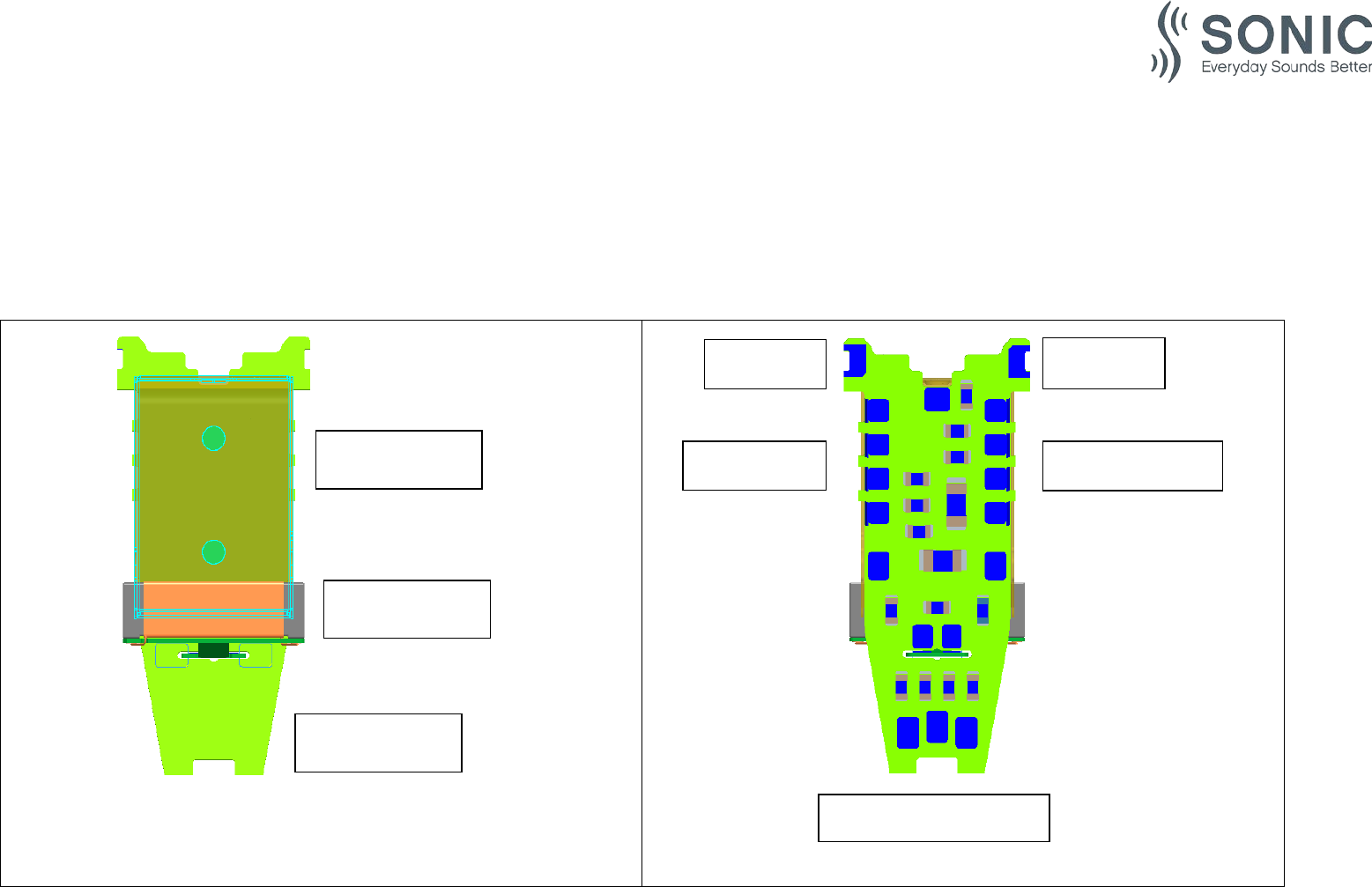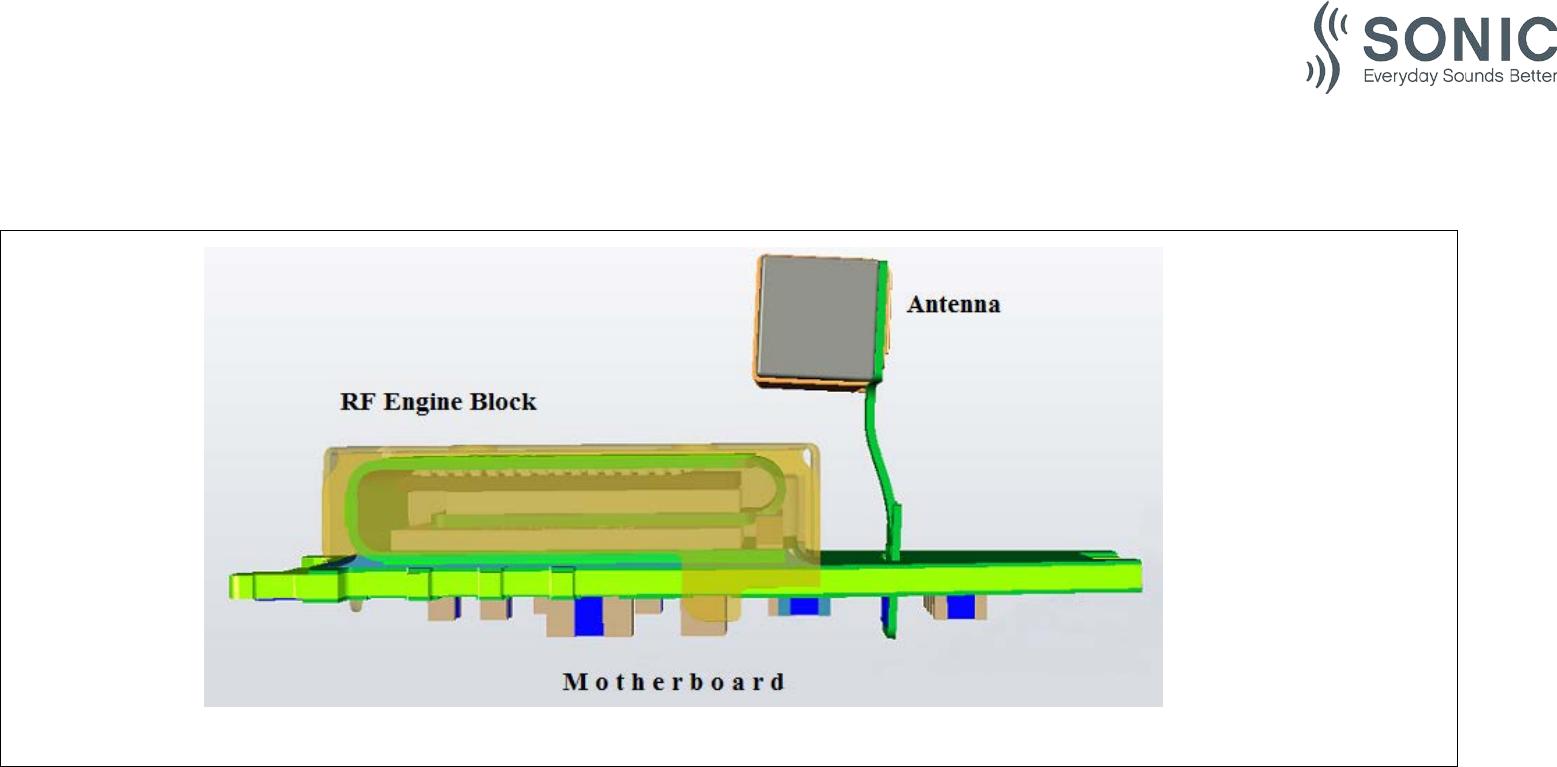Sonic Innovations FU2SP Hearing Aid Module User Manual COMPANY LETTER HEAD
Sonic Innovations, Inc. Hearing Aid Module COMPANY LETTER HEAD
Installation Guide

Sonic Radio Model - Quick Installation Guide
Radio Model Name: FUSION 2 SP
The FUSION 2 SP radio model is a low power, inductive radio transceiver working at 3.84 MHz consisting of an RF Engine Block (incl. DSP, radio & memory),
antenna coil, motherboard (incl. small passive components) and intended to be installed as a module into Sonic wireless hearing aid devices only. The module also
has all voltage regulators included inside the engine block. The module requires a battery, one or two microphones on a flex PCB and a speaker to be attached and
must be mounted in an external plastic shell. It is possible for authorized personnel only to program the module through a flex I/O. The module is depicted below:
FUSION 2 SP Radio Model (seen from the top side)
FUSION 2 SP Radio Model (seen from the bottom)
RF Engine
Block
Antenna
Motherboard
Battery -
Battery +
Program flex I/O
Speaker unit connectors
Mic flex
1

Sonic Radio Model - Quick Installation Guide
Radio Model Name: FUSION 2 SP
FUSION 2 SP Radio Model (seen from the side)
FCC ID: ZTOFU2SP IC: 9799A-FU2SP
2

Sonic Radio Model - Regulatory Label Information
Radio Model Name: FUSION 2 SP
Contains: FCC ID: ZTOFU2SP
IC: 9799A-FU2SP
NOTICE:
This device complies with Part 15 of the FCC Rules and with the license exempt standard RSS-210 of Industry Canada.
Operation is subject to the following two conditions:
(1) This device may not cause harmful interference, and
(2) This device must accept any interference received, including
interference that may cause undesired operation.
Changes or modifications made to this equipment not expressly approved by Sonic may void the FCC authorization to operate this equipment.
Le présent appareil est conforme aux CNR d'Industrie Canada applicables aux appareils radio exempts de licence.
L'exploitation est autorisée aux deux conditions suivantes:
(1) l'appareil ne doit pas produire de brouillage, et
(2) l'utilisateur de l'appareil doit accepter tout brouillage radioélectrique subi, même si le brouillage est susceptible d'en
compromettre le fonctionnement.
3